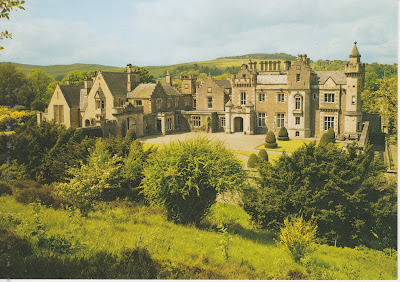River front cabins, Winthrop, Washington
Several weeks ago we went on a three-day trip with 15 Happy Hiker friends.
Most members of the group, including Bob and I, stayed in rented cabins
along the river and one couple had their own cabin nearby. The
majority of the group went on long, more strenuous hikes, 10 miles
round trip and at least 2000 ft elevation gain, for two of the three
days. We chose to start with a modest hike, or hikes, the first
day, Rainy Lake and Washington Pass, about 100 vertical gain for a 2.2
mile total. There were fantastic reflections in the lake, mountain
views, and a waterfall. The second day we went with another Happy Hiker
to Cutthroat Lake, 4 miles round trip with 400 ft elevation gain and
found fall colors, rocks, squirrels and chipmunks. The third day Bob
and I went to Blue Lake. An absolutely beautiful place and the most
difficult hike I have attempted this year at about 5 miles round trip
and an elevation gain of 1300 feet. Before the Achilles problem this would have been an average hike for me. In the evenings the entire group
met together at a local restaurant to have dinner.
Day 1, Rainy Lake & Washington Pass
Trail sign
Rainy Lake is at 4500 ft elevation and Washington Pass is higher at 5500 ft. The short trail to Rainy Lake is asphalt and wide enough for a wheelchair or walker. There are several benches along the trail. There were nice outhouses at each of the trails we visited.
"What do you see, Bob?"
"Reflections in the lake and a magnificent waterfall!"
Bob's zoom-in view of the waterfall
A young couple asked us to take their photo in this spot and in return they took one of us!
From Rainy Lake we drove a short distance to Washington Pass where there were lookout spots for views of the surrounding mountains. Like Rainy Lake, the trail up to the lookout areas was paved but was probably not suitable for wheelchairs or walkers.
Views from Washington Pass
Looking down on the road below
Clouds rolling in over the mountains
Totals for Rainy Lake & Washington Pass: 22 hikers including two toddlers and an infant in a front carrier, 1 dog
Day 2, Cutthroat Lake
No camping within 1/4 mile of the lake
Munch, munch, munch, too busy eating to care about people passing by
Cutthroat Creek
Autumn colors
The trail is packed dirt and while not really wide enough to walk side-by-side it is not narrow or overgrown.
Pipsissewa going to seed
This log bridge without rails was about 8 feet above the creek. Our friend has Parkinson's and decided it was not a good idea for him to attempt the bridge or fording the creek. I didn't want to chance it with my still healing Archilles and stayed with him while Bob went on the rest of the short distance to the lake.
Bob's photo of Cutthroat Lake
Amanita muscaria (poisonous)
This very attractive mushroom can be yellow, orange or red with warty white bumps. Do not eat (or maybe not even touch), it is poisonous.
Cutthroat Lake
Totals for the day: 32 hikers, 4 bikes, and 4 dogs
Day 3, Blue Lake
View of the Liberty Bell group from the road
Fall colors
Another camping sign
We had hoped to see some of the golden yellow larch trees but were just a little too early in the season to see very many.
Close up of the bright green larch tree needles that will soon turn golden yellow
Blue Lake
The remains of an old log cabin
One of the mountain tarns on the Tarn Loop Trail next to Blue Lake. There was a nice meadow also.
Ground cover turning red
Looking down on Blue Lake from the Tarn Loop trail
Sign on the Tarn Loop trail identifying the Liberty Group mountains
A tree growing in or near a hole in the mountain side
Trail
The Blue Lake trail had some rocks and roots as well as avalanche chutes with loose gravel, rocks and dirt. On the way down from Blue Lake I fell in an avalanche chute and managed
to both sprain and fracture my left ankle. Bob always carries a first aid kit and was able to wrap my ankle with an Ace bandage. Then, with slightly more than 1 mile back to the parking area, we inched slowly along. I am hoping to retire the cane
and fancy gray boot in a couple of weeks but the accident has ended my
hiking for the rest of this season.
Oops
Blue Lake
Totals for the day: In the morning on the way up we counted 73 hikers and 3 dogs, in the afternoon the count had exceeded 100 hikers and some more dogs. The fall and the mile walk out on sprained and fractured ankle resulted in an incomplete count for the afternoon.











































































